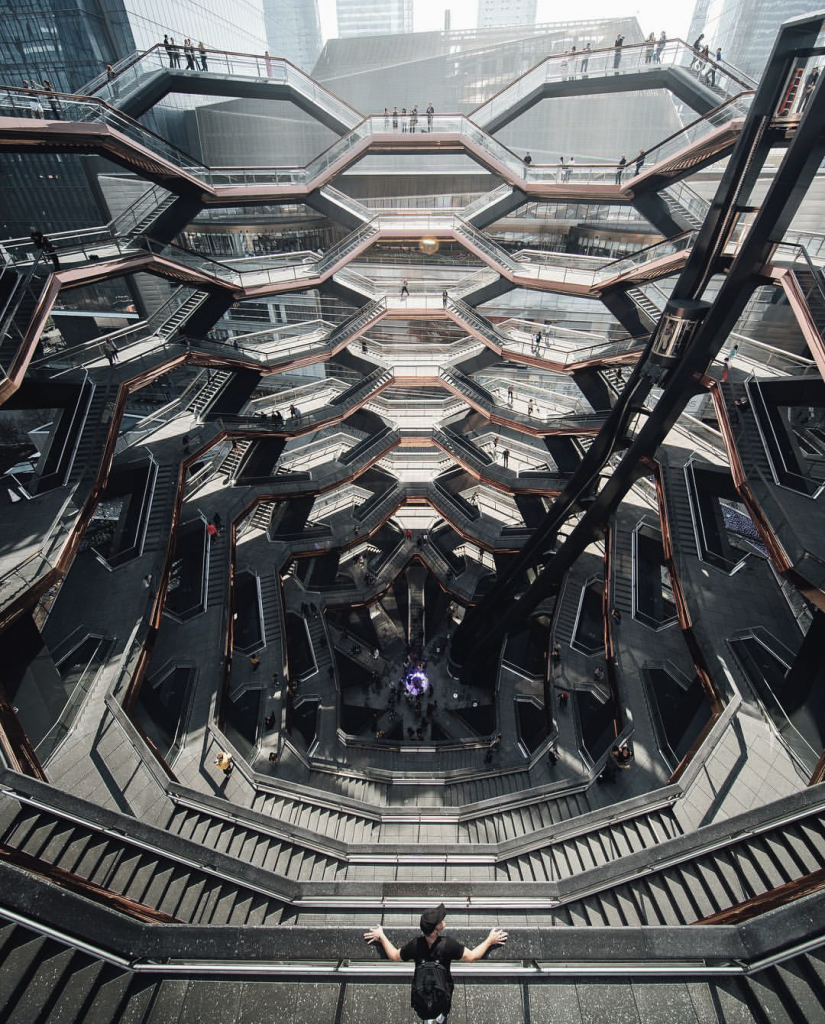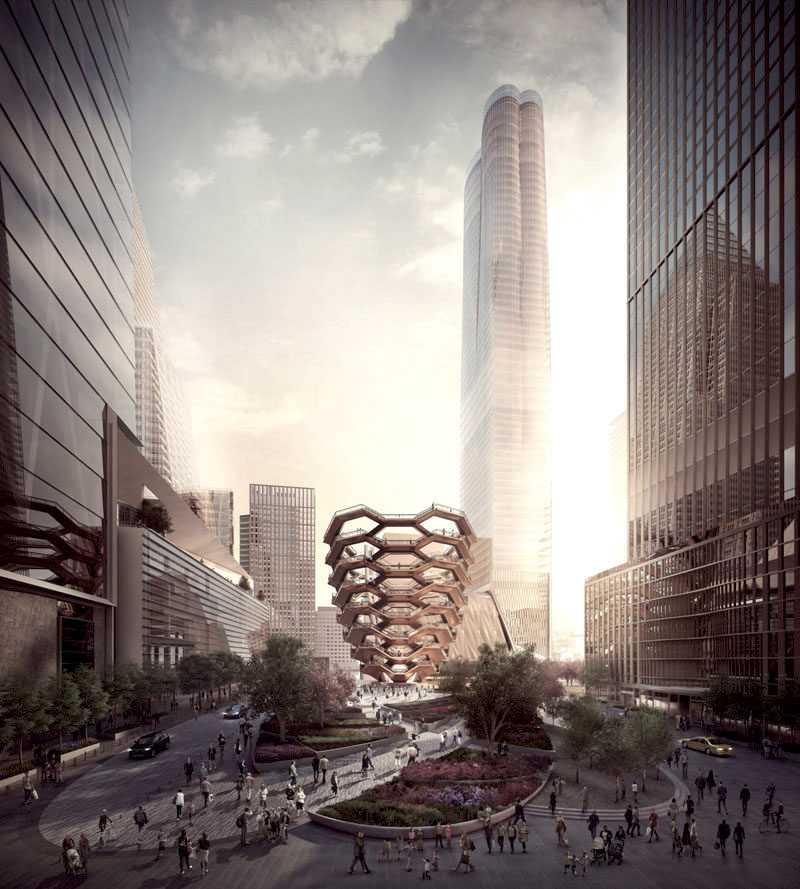The buildings of New York always held a special symbolic quality. The Empire State Building was iconic for it’s age, representing a relentless striving upwards, culminating in it’s gleaming Art Deco top.
The Word Trade Center was a symbol of post-war New York. Jean Baudrillard uncovered its symbolism:
“Why are there two towers at New York’s World Trade Center? All of Manhattan’s great buildings were always happy enough to confront each other in a competitive verticality, the result of which is an architectural panorama in the image of the capitalist system: as pyramidal jungle, all of the buildings attacking each other. …This architectural symbolism is that of the monopoly; the two WTC towers, perfect parallel, a quarter-mile high on a square base, perfectly balanced and blind communicating vessels. The fact that there are two of them signifies the end of all competition, the end of all original reference. … For the sign to be pure, it has to duplicate itself: it is the duplication of the sign that destroys its meaning. This is what Andy Warhol demonstrates also: the multiple replicas of Marilyn’s face are there to show at the same time the death of the original and the end of representation. …There is a particular fascination in this reduplication. As high as they are, higher than all the others, the two towers signify nevertheless the end of verticality. They ignore the other buildings, they are not of the same race, they no longer challenge them, nor compare themselves to them, they look one into the other as into a mirror… What they project is the idea of the model that they are one for the other… At the same time as the rhetoric of verticality, the rhetoric of the mirror has disappeared…”
Jean Baudrillard, Simulations, 1983
After reading Baudrillard’s text, one can understand the cynical context of the tragedy of 9/11: Intent on destroying a symbol of Western capitalism, these terrorists actually destroyed its premier symbol of hope, of being able to overcome singularity. And singularity is indeed back since 9/11, with monopolies since then having assumed increasing power.
Thomas Heatherwick’s New York Vessel has nothing of the aspirational qualities of the Empire State Building or the Word Trade Center, but it is the symbol of contemporary New York.
Heatherwick’s Vessel is repeatedly in the news because it attracts people to commit suicide by jumping from it. The fault, it is said, is that the railings are not high enough, and the operators and Heatherwick appear to have ignored calls to remedy the situation. Instead, the operators changed the entry fee from free to 10 dollars.
The railings, however, are not the only problem. People who want to commit suicide don’t do it just anywhere if only railings are low. The Golden Gate Bridge, for instance, is a rather popular suicide spot, and not accidentally it is also a symbolic structure, connecting two shores across a grand stretch of water with grand arches. Jumping from it to death then has something to do with a desperately wanted, but denied connection, perhaps unrequited love.
The Vessel is more insidious in its meaning. It is nothing to live in and nothing to cross over to get somewhere else. It is an interwoven circular staircase leading to nowhere but itself: It is a 3-dimensional hamster wheel, a Kafka’s Castle in glass and concrete.

This is a public structure, yet it is so anti-social that it borders on the absurd. By virtue of its steep staircases, it is unaccessible for people with disabilities or anyone over 65. This could be a place to unwind and meet, but there is no single tree and no single bench. By design, this structure excludes the vulnerable and the old, disallows any sitting or resting, and discourages any activity except climbing stairs.
Which is not fun either. In general, stairs exist for a functional reason, to get up or down in order to arrive somewhere. They are promising a goal at the end. Even in the sterile metaverses of computer games, there are awards once a player has completed a level. But here, stairs only lead to more stairs, and once you have arrived at the top, there is nothing to be found.
There is no seating after having climbed these 16 tedious floors, no water fountain, no hot dog stand, no greenery. There is no grand view to reward you either: views are obstructed by all the generic glass-clad facades around, a partial view of the Hudson river is the best you can get. Whatever you try, however often you go around and up and down these stairs, there is nothing to explore. The Vessel only leads back to itself, it is a panopticon of nihilism.
Cynically enough, the only other thing but climbing stairs you can do here is to commit suicide. It ends what this menacing structure represents: to run around in a hamster wheel of life designed to give you no joy.
New York once was the very place for human aspiration, a place where, at least in theory, if you just had enough determination and put in enough effort, you could become what you wanted, no matter where you came from. That was the great draw of New York, it’s promise and fascination.
But the new symbol of New York is the Vessel. This symbol wants not only to be looked at, it wants to be climbed so that it’s message is felt as pain in the calves and inscribed into your body: no matter how much you strive upwards, there is nothing here for you – unless, of course, you belong to the one percent looking down at this spectacle from their supertall buildings.

There are countless vacated shops now in downtown Manhattan, all former small businesses which got crushed between the pandemic and ever-increasing rental prices. This depressing ground level is encircled and looked down at from an ever-increasing number of outrageously tall and thin buildings built exclusively for the super-rich.
Monuments tend to reveal the mindsets of the people who commission them. The stifling, pseudo-classical architecture of the Nazis was meant to make the poisonous, petit-bourgeois thinking at its core look grandiose. The monuments of former communism projected phony ideas of a proletarian super-humanity while real people starved.
The Vessel is a panoptic hamster wheel for humans. In the Middle Ages, only the land owning elite had a good life, the vulnerable were excluded, and serfs had to labor on the edge of survival. Human work was degrading, only land ownership, reserved for a tiny elite, guaranteed the power to use others and make profit. The Vessel, as excluding and anti-social as it is, is the symbol of the rent-seeking class, projecting the image of a postmodern feudal order. This is the vessel of the new vassals.
For Jean Baudrillard, Manhattan represented the very image of the capitalist system. It’s not a pretty image anymore.